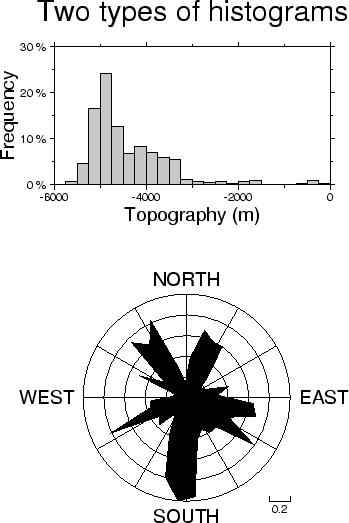 |
GMT provides two tools to render histograms: pshistogram and psrose. The former takes care of regular histograms whereas the latter deals with polar histograms (rose diagrams, sector diagrams, and windrose diagrams). We will show an example that involves both programs. The file fractures.yx contains a compilation of fracture lengths and directions as digitized from geological maps. The file v3206.t contains all the bathymetry measurements from Vema cruise 3206. Our complete figure (Figure 6.6) was made running this script:
psrose fractures.d -A10r -S1.8in -U/-2.25i/-0.75i/"Example 6 in Cookbook" -P -G0 -R0/1/0/360 -X2.5i \ -K -B0.2g0.2/30g30 >! example_06.ps pshistogram -Ba2000f1000:"Topography (m)":/a10f5:"Frequency"::,%::."Two types of histograms":WSne \ v3206.t -R-6000/0/0/30 -JX4.8i/2.4i -G200 -O -Y5.5i -X-0.5i -L0.5p -Z1 -W250 >> example_06.ps \rm -f .gmtcommands